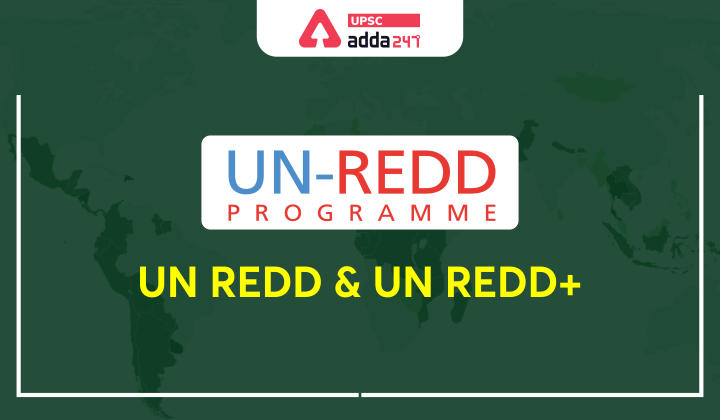Table of Contents
Relevance
- GS 2: Bilateral, regional and global groupings and agreements involving India and/or affecting India’s interests.
- GS 3: Conservation, environmental pollution and degradation, environmental impact assessment.
UN REDD
- The United Nations Collaborative Programme on Reducing Emissions from Deforestation and Forest Degradation in Developing Countries (UN-REDD) is the UN knowledge and advisory platform on the forest solutions to the climate crisis.
- UN-REDD was launched in 2008 and builds on the technical expertise of the Food and Agriculture Organization (FAO), the United Nations Development Programme (UNDP) and the United Nations Environment Programme (UNEP).
- At COP 13 under the Bali Action Plan, it was decided that REDD is to be included in a post-2012 framework and the details were to be decided during the COP 15 in Copenhagen.
UN REDD goals
- The below stated goals are to be achieved by 2025
- Forest emissions to be reduced by 1 Gigaton per year.
- USD 5 Billion mobilisation by 2025.
- Over 15 countries enhanced forest ambitions in NDCs.
UN REDD+
- Reducing emissions from deforestation and forest degradation (REDD+) is a mechanism developed by Parties to the United Nations Framework Convention on Climate Change (UNFCCC).
- It creates a financial value for the carbon stored in forests by offering incentives for developing countries to reduce emissions from forested lands and invest in low-carbon paths to sustainable development.
- UN REDD+ goes beyond simply deforestation and forest degradation and includes the role of conservation, sustainable management of forests and enhancement of forest carbon stocks.
- REDD+ is seen as a mechanism for directing funds from the North to the South to help expand low-carbon development and poverty reduction.
REDD and REDD+ difference
- REDD is the abbreviation for “reducing emissions from deforestation and forest degradation”, followed by REDD+, with the “plus” referring to “the role of conservation, sustainable management of forests and enhancement of forest carbon stocks in developing countries”.
- The UN-REDD Programme, and other multilaterals including the Forest Carbon Partnership Facility (FCPF) and Forest Investment Program (FIP), support developing countries with financial and technical assistance to build the capacities to design and implement REDD+ strategies. While REDD+ is a climate change mitigation solution being developed by Parties to the United Nations Framework Convention on Climate Change (UNFCCC), that incentivizes developing countries to keep their forests standing.





 TSPSC Group 1 Question Paper 2024, Downl...
TSPSC Group 1 Question Paper 2024, Downl...
 TSPSC Group 1 Answer key 2024 Out, Downl...
TSPSC Group 1 Answer key 2024 Out, Downl...
 UPSC Prelims 2024 Question Paper, Downlo...
UPSC Prelims 2024 Question Paper, Downlo...
